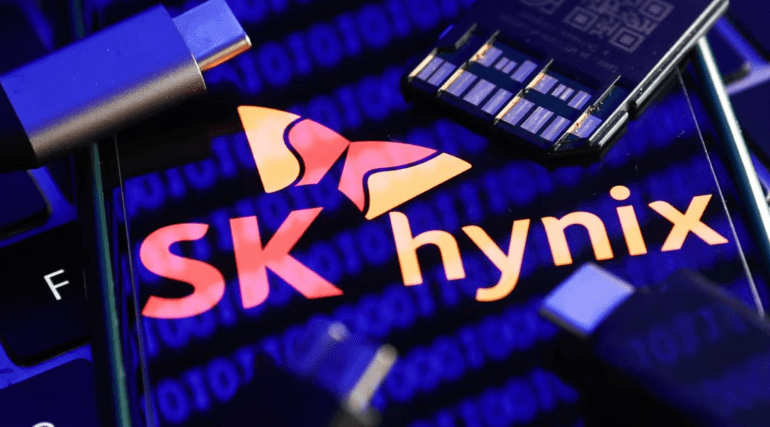- SK Hynix reported a six-year high in second-quarter profit, driven by robust AI-related demand.
- Revenue reached 16.42 trillion Korean won ($11.86 billion), slightly above expectations.
- Operating profit hit 5.47 trillion Korean won, significantly up from a loss a year ago.
- Revenue increased 124.7% year-over-year, marking the highest quarterly revenue in the company’s history.
- The company’s shares fell by 7.81% due to broader market declines following weak earnings from major U.S. tech firms.
- SK Hynix plans to mass-produce 12-layer HBM3E memory chips, with shipments expected by Q4.
- Supply constraints continue for both DRAM and HBM, with increased investment needed to meet rising demand.
- Analysts forecast tight supply for high-bandwidth memory until 2025, supporting favorable pricing for SK Hynix.
Main AI News:
SK Hynix, a major player in the global memory chip industry, announced a significant profit surge for the second quarter, marking its highest earnings in six years. The South Korean company reported second-quarter revenue of 16.42 trillion Korean won (approximately $11.86 billion), slightly surpassing the expected 16.4 trillion won. Operating profit reached 5.47 trillion Korean won, outpacing predictions of 5.4 trillion won and reversing last year’s loss of 2.88 trillion won.
This remarkable financial performance, driven by a 124.7% increase in revenue year-over-year, reflects SK Hynix’s pivotal role in the AI sector. The company attributes this success to a strong demand for high-bandwidth memory (HBM) products essential for AI applications, leading to a 32% revenue increase from the previous quarter. Despite this success, SK Hynix’s shares fell by 7.81% due to broader market declines following disappointing earnings reports from major U.S. tech companies.
Looking ahead, SK Hynix projects sustained strong demand for AI servers and a gradual recovery in traditional markets, bolstered by new AI-enabled PC and mobile devices. The company plans to maintain its market leadership by mass-producing the next-generation 12-layer HBM3E products, with initial shipments expected by the fourth quarter. However, SK Hynix faces ongoing challenges with supply constraints, particularly in DRAM and HBM sectors. Increased investment in production capacity is anticipated, though supply tightness for conventional DRAM is expected to persist.
Analysts predict that the high-bandwidth memory supply constraints will continue until 2025, supporting a favorable pricing environment for SK Hynix. The firm remains optimistic about robust earnings in 2024-2025, driven by its competitive edge in AI-related memory solutions. As AI adoption grows, the demand for advanced memory chips is expected to keep supply tight, with SK Hynix and Micron already facing shortages for 2024 and near depletion for 2025. The company is also preparing to introduce its 12-layer HBM4 in late 2025.
Conclusion:
SK Hynix’s impressive profit growth highlights its pivotal role in the AI-driven memory chip market. The company’s ability to capitalize on strong demand for high-bandwidth memory, despite broader market challenges, positions it advantageously for continued profitability. The anticipated tight supply of advanced memory products will likely support favorable pricing dynamics, benefiting SK Hynix and reinforcing its market leadership. As AI adoption accelerates, SK Hynix’s strategic investments in memory technology and capacity expansion are set to enhance its competitive edge and drive future growth.

